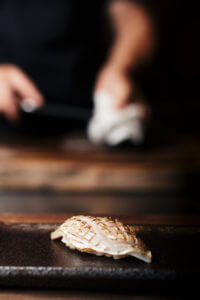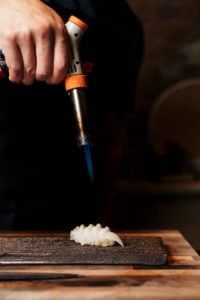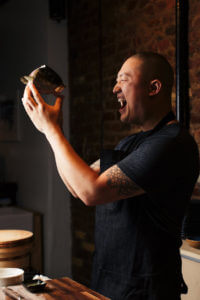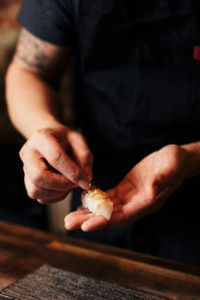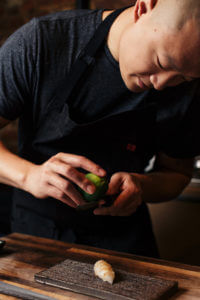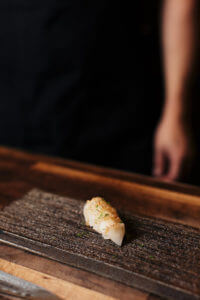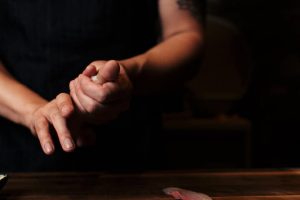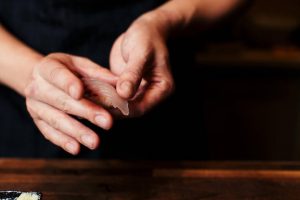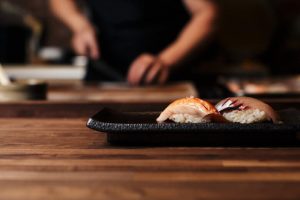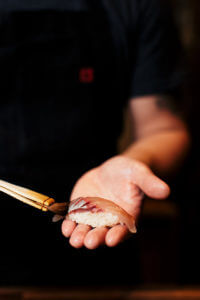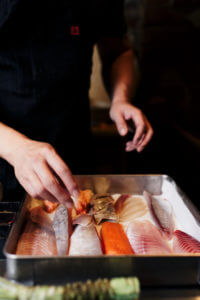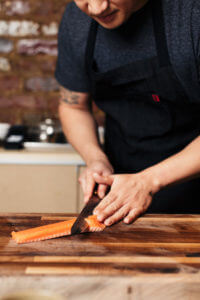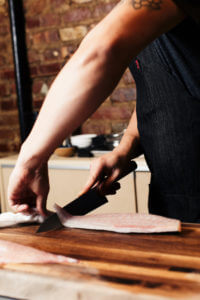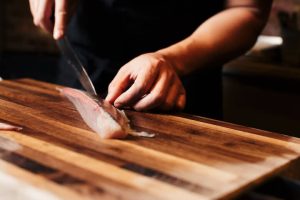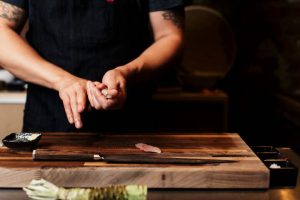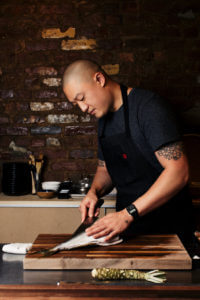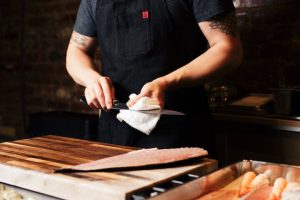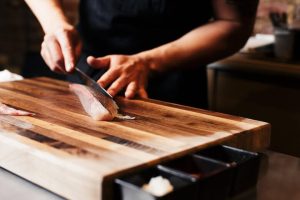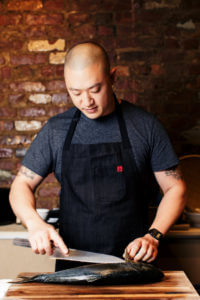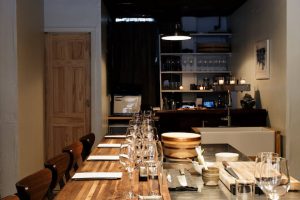
TJ Provenzano likes to begin each seating at Mayanoki, the recently opened East Village omakase he manages, with a disclaimer: “You’re going to see some species tonight that you may not be accustomed to, and there will be no endangered species served.”
By “endangered species,” Provenzano means sushi joint staples such as toro, unagi, long-line caught maguro, wild abalone and anything else “inordinately deleterious to the health of the oceans,” as environmentalist Casson Trenor writes in Sustainable Sushi: A Guide to Saving the Oceans One Bite at a Time. That such animals are being eaten into extinction is not news: Trenor’s touchstone book came out in 2008, and fish and shellfish redlists such as Monterey Bay Aquarium’s Seafood Watch have likewise been around for years. Yet even as sustainable sushi has begun catching on in places like Seattle, San Francisco and Portland, but except for Williamsburg’s Okonomi and Osakana, New York City has lagged behind.
“Sushi is probably the only type of cuisine that still relies on almost-extinct species,” says David Torchiano, Mayanoki’s co-founder. “If a French restaurant was serving some highly endangered turtle, no one would eat it. So why are we still doing the equivalent for sushi?”
When asked about this, most sushi chefs, he says, just shrug and say that’s what customers want. But he and co-founder Josh Arak are convinced that there is another way. “We’ve taken this on as a challenge to show people this is the right thing to do and the most interesting thing to be doing,” Torchiano says. “We hope all restaurants come to see sustainability not as a dead end but as an opportunity.”
The menu itself is “at the mercy of the ocean,” as chef Mike Han puts it, and as such it changes daily.
Mayanoki meticulously sources its fish from Seafood Watch-certified businesses such as Greenpoint Fish & Lobster Co. and Sea to Table, as well as from smaller trusted purveyors, such as Blue Moon, a husband-wife team from Long Island. None of Mayanoki’s fish are flown in from Japan, sparing the planet greenhouse gas emissions. Instead, the 15-course tasting menu emphasizes seasonal, domestic varieties, especially ones from the East Coast. All of the restaurant’s wines and ciders also originate from New York State—surprisingly, a rarity in the city.
Located in a nook of a space, Mayanoki seats just eight at a time, lending it the feeling of an intimate, well-kept secret. But rather than the reverential, even stuffy experience courted by some Manhattan and Tokyo sushi dens, casual conversation and openness between guests and staff are encouraged. A 90s hip-hop soundtrack keeps the mood light, and custom-made abstract works by the Bushwick-based artist Sonomi Kobayashi complement the establishment’s mix of tradition meets cutting-edge.

The menu itself is “at the mercy of the ocean,” as chef Mike Han puts it, and as such it changes daily. It also features varieties rarely served elsewhere, if at all. On a recent Friday evening, some of the more intriguing nigiri included Virginia cobia crowned with delicate dill flower from Union Square Greenmarket’s Windfall Farms; super fatty New Jersey bluefish, better than any I have ever had cooked; and barely-cured mackerel, plucked from East Coast waters just two days earlier. Another standout included oversized eight-year-old oysters recovered from a bed in Massachusetts; they had literally been forgotten, allowing them to grow amok. Han dressed the palm-sized bivalves with a drizzling of Korean fermented chili paste and then wrapped them up—stuffed grape leaves-style—in pickled wasabi leaves from Oregon. “No one wanted these oysters because they’re big and weird-shaped,” he explained to a chorus of “Mmmms!”
The Mayanoki team strives to be not only eye-opening from an environmental point of view, but also from a culinary one. In that they have succeeded. As Han says, “In America, we import 90 percent of our seafood, but we have a tremendous bounty right outside our door.”



